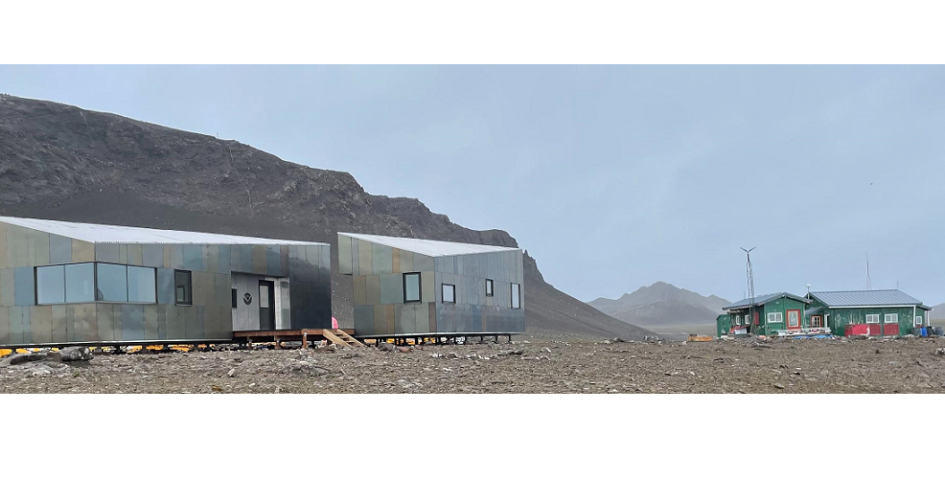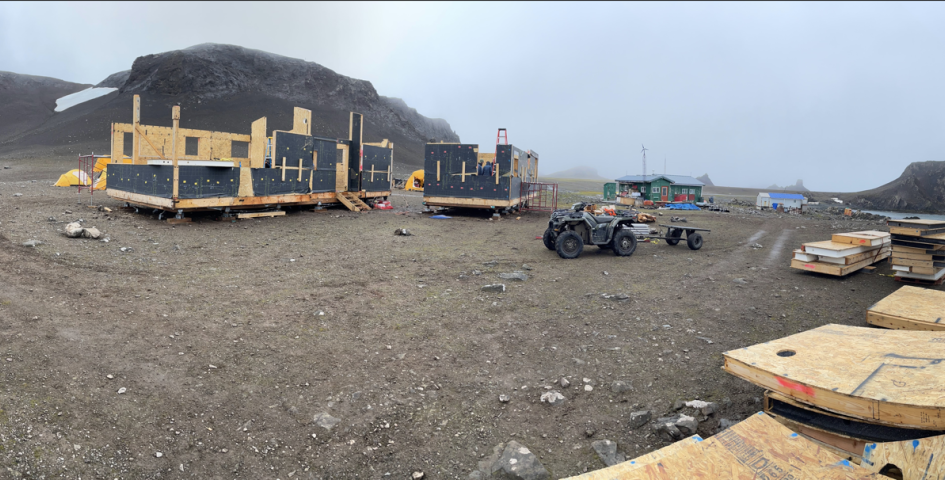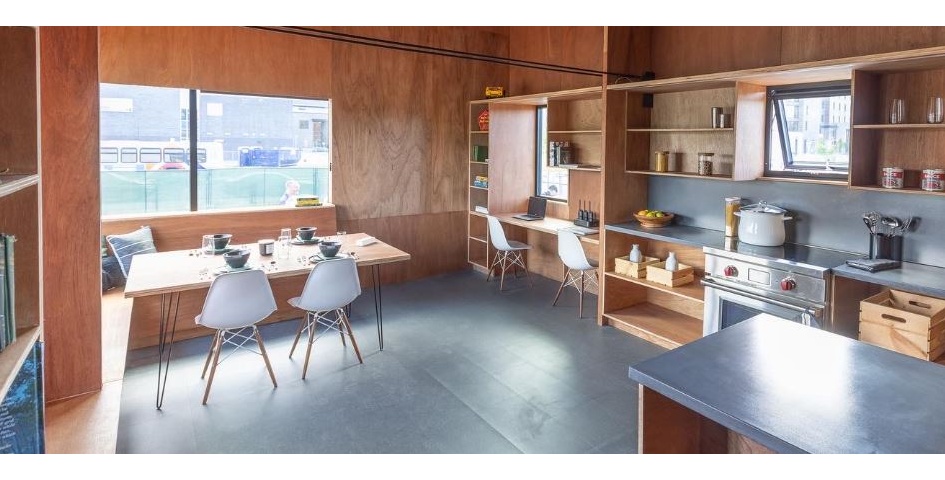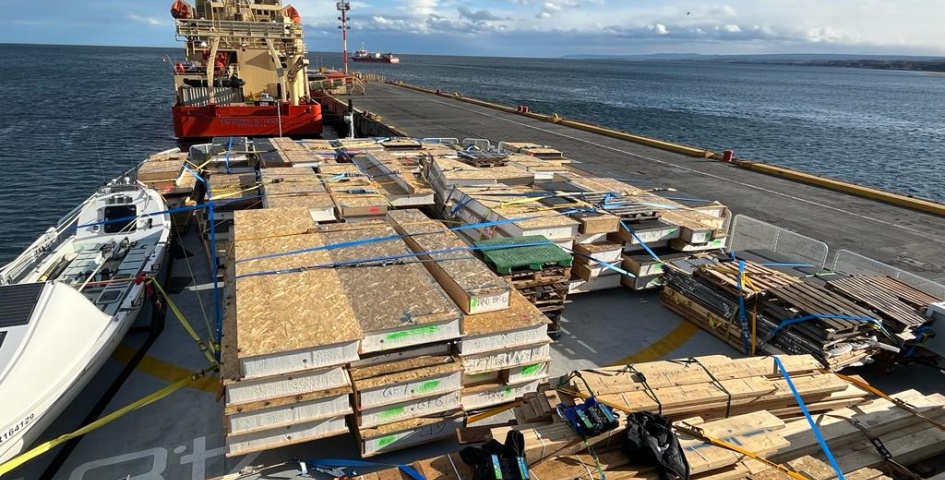SIP Research Center Cape Shirreff Antarctica
Project Information
| Project Type: | Commercial, Other Commercial |
|---|---|
| Manufacturer: | Premier Building Systems |
| Builder: | Bespoke Project Solutions & University of Colorado Building Workshop |
| Design Professional: | Colorado Building Workshop at the University of Colorado Denver |
| Year Built: | 2023 |
Performance
| High Performance: | No |
|---|---|
| HERS/EUI Index Score: | |
| ACH50 - Blower Test Results: | |
| kBtu/sq.ft./year: | |
| CO2 lbs./sq.ft./year: |
Awards/Certifications: Building Excellence Awards
BEA: 2024 Building Excellence Award - Classic Winner
Building use:
Research center Galley & Bunk House: NOAA's U.S. Antarctic Marine Living Resources Program partnered with students to design a field camp at the bottom of the world. One of the most breathtaking regions of Antarctica is the South Shetland Islands, just north of the Antarctic Peninsula. The islands are among the fastest warming places on Earth. Climate change has affected the abundances of certain species and where they're found in Antarctica. And the affects of this on marine wildlife have been studied by the U.S. AMLR Program at this field camp called at Cape Shirreff on Livingston Island, since 1996. After 26 years in harsh Antarctic conditions, Scientists were spending up to 30 percent of their time each field season cleaning and repairing the camp, cutting into valuable research time. The camp needed to be replaced, and NOAA decided to also expand because of the growing need to continue research with climate change and global warming. Then the COVID-19 pandemic struck in early 2020, leaving scientists unable to travel to Antarctica. With no way to conduct research in Antarctica for at least a year, the Program decided to move forward with replacing the camp.
How did SIP construction help you get this job?
The U.S. AMLR Program needed to replace the deteriorating camp, but it couldn’t afford to build a new camp and conduct a normal field season in the same year. It had to make a choice: pause science and rebuild the camp? Or continue at the current camp while balancing research with increasing maintenance? So speed of assembly with SIPS and high thermal performance were key factors for the students when designing the building for the Antarctic Climate.
SIP wall thickness: 6" (3813 FT2 Wall Panels)
SIP roof thickness: 10" (2932 FT2 Roof/Floor Panels)
SIP floor thickness: 10"
SIP partitions thickness: 4"
Describe the benefits of using SIPs on this project. Did SIPs help save time, labor, construction costs, or energy?
Speed of construction and high thermal efficiency is KEY in this extreme arctic climate where scientists only spend a portion of the year because of extreme temperatures. A ship to Livingston Island, Antarctica carrying the panels takes 4-6 days, depending on ocean conditions. Because of this limited occupancy period, and transportation time frame, construction timelines, personnel are also extremely limited and short. (When U.S. AMLR scientists are not in Antarctica, they work at the NOAA Fisheries Southwest Fisheries Science Center in La Jolla, California.)
The team measured and set the foundation, installed the first two buildings, and deconstructed the emergency shelter at Cape Shirreff in just 9 weeks! In short, SIPs made construction quicker, cheaper, and more energy-efficient.
Describe any innovative design elements or structural engineering involved:
Throughout 2021 and early 2022, architecture students of the Colorado Building Workshop designed the buildings to withstand the extreme conditions in Antarctica. The architects, students, and U.S. AMLR scientists worked together to ensure that construction would not cause long-term disturbance to the ecosystem. They also designed the buildings to be removed entirely in the future. Premier supplied panel blanks and the students then fabricated the buildings in Denver, Colorado. and came up with a very sustainable design on phase 1. Where most was manufactured and shipped on barges for fast installation in an arctic climate.
HVAC:
High Performance - The building’s envelope, HVAC, and lighting design resulted in a 29% energy cost savings per year and additional achievement of all three LEED Daylighting credits
Describe any other energy-saving materials used in the building envelope other than SIPs. List U-values of windows used and the U or R-value of any insulation materials:
This building earned significant Materials credits, including all three points under the Low Emitting Materials credits, and the materials Optimization points, which illustrates that materials were installed in the building that went above and beyond industry standard for environmental impacts and human health impacts.
Were any solar panels installed on the project?
YES! Full rooftop solar powered system.
Please list any sustainable materials or design features not listed above, such as recycled materials, low-VOC finishes, landscaping, etc.
Along with the SIPS floor, wall and roof envelope, exteriors are stainless steel to blend into the surrounding landscape. No need for annual re-painting!
Buildings and decking are elevated to facilitate snow melt drainage and to minimize impact to the terrain. The twisted gable roof maximizes sun exposure for the rooftop solar-powered system.
Any additional comments on the project:
The design and construction team completed the first two buildings--the kitchen and the bunk house--in summer 2022. They carefully deconstructed them and packed them into a shipping container for the long journey to Punta Arenas, Chile. The building materials arrived in Chile in November 2022 and were transferred to a ship bound for Cape Shirreff. Another 4-6 weeks away.
When the ship arrived at Cape Shirreff, the team transferred pallets of building materials—one at a time—via small inflatable boat to the shore. Offloading all building materials took 7 days and 334 small boat trips. Team members carried building materials from the boat and stacked them at the top of the beach. All together, building materials weighed more than 65,000 pounds. Some of the biggest panels weighed 300 pounds each. The rest of the build team arrived a few weeks later and helped transport all the materials by hand and with an ATV to the build site a quarter mile away.
The build team tripled the normal human population at Cape Shirreff. There wasn’t room for everyone in the old camp buildings, so the build team slept in tents. Or, at least, they tried to sleep. Cold, wet, windy conditions and 20 hours of daylight made this a challenge. The build team only had a month to install the new buildings. Sleep or no sleep, they got right to work. Progress was fast, but building conditions were rarely ideal. (https://cdn.embedly.com/ Build Timelapse). Panoramic tour of construction and project here:
The new camp was officially named the Holt Watters Field Camp after Rennie Holt (the previous director) and George Watters (the current director).
The build team and the scientists carefully deconstructed the Cape Shirreff Emergency Shelter from the inside out to minimize impact to the Antarctic environment and nearby penguin colonies. The team carried many of the shelter remnants back to the main camp more than a mile away! (https://storymaps.arcgis.com/)
Documents




































